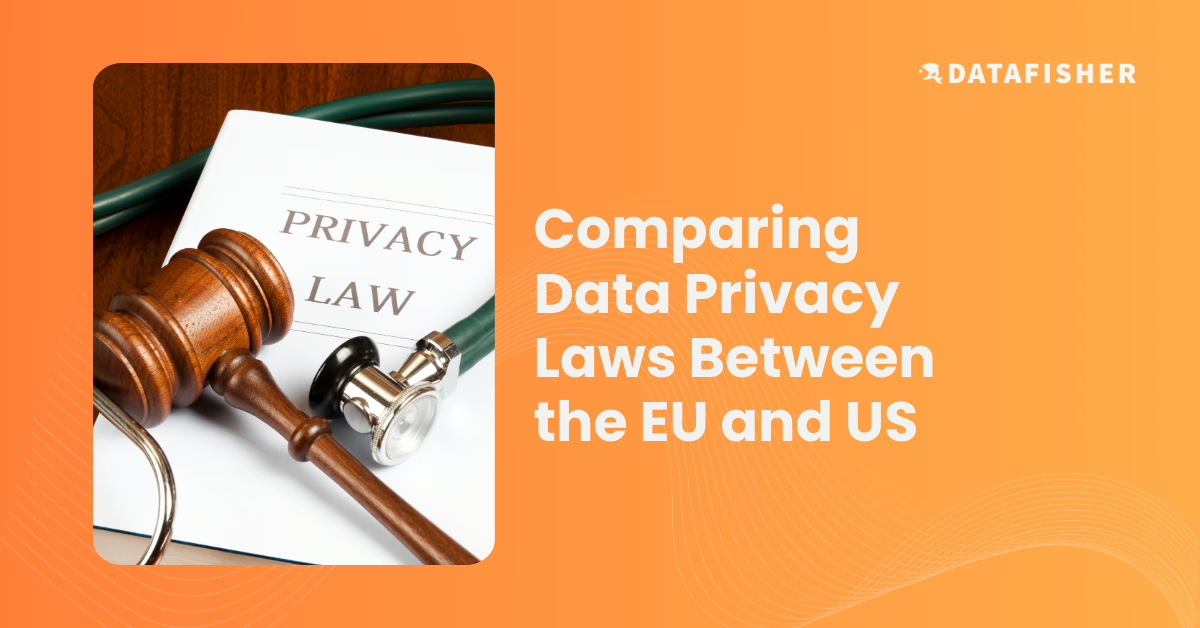The introduction of the General Data Protection Regulation (GDPR) in 2018 marked a significant shift in privacy protection laws across the EU. Comprehensive and stringent, the GDPR set a high standard for data privacy laws, far beyond any privacy regulations in the US at the time. As the digital landscape expanded and most transactions requiring data were brought online in the last few years, data privacy laws in the US have evolved in tandem. The US is getting closer to a parallel with European regulations, but there are still some noticeable differences between the laws in the two regions.
What is GDPR?
The General Data Protection Regulation applies to any organization collecting or holding personal data belonging to residents within the EU; the European Commission defines personal data as any information that can be used to identify a data subject, or person. By law, any business selling goods or services to EU residents or monitoring their behaviors must be compliant with the GDPR. GDPR compliance is based on seven key principles: lawfulness, fairness, and transparency; purpose limitation; data minimization; accuracy; storage limitations; integrity and confidentiality; and accountability. Notably, categories that include sensitive data require additional protections and are subject to a data protection impact assessment.
Non-compliance with the GDPR incurs tiered penalties, escalating based on the severity of violations. Standard breaches incur fines up to €10 million or 2% of annual global turnover, while more severe violations can result in penalties of up to €20 million or 4% of annual global turnover.
The GDPR was implemented to replace the Data Protection Directive, which had outlived its usefulness in protecting personal data in the contemporary data environment. Subsequent rulings by the European Court of Justice have strengthened individual rights, allowing consumer protection associations to take representative actions on behalf of affected consumers.
How is Data Privacy Law Different in the US?
In sharp contrast to the EU, the US doesn’t have a comprehensive federal law that applies to all organizations and all data categories. Instead, various regulations specific to individual sectors have been enacted, such as the Health Insurance Portability and Accountability Act (HIPAA) for healthcare, the Gramm-Leach-Bliley Act (GLBA) for financial institutions, and the Federal Information Security Management Act (FISMA) for federal agencies.
In the absence of nationwide legislation that holistically addresses the increasing need for stronger protection of personal data in the digital age, several U.S. states have opted to enact robust data privacy laws of their own to safeguard their residents. After a series of high-profile data breaches, California established the California Consumer Privacy Act (CCPA) in 2020, the first state law that most closely resembles GDPR, which was then amended and strengthened with the California Privacy Rights Act (CRPA) last year. To date, twelve other states have implemented similarly strict data privacy regulations.
Despite the progress made through state legislation, the US still significantly trails way behind Europe in ensuring effective data protection for consumers. According to a recent BestVPN internet privacy index, the US ranked 18th on their list, with 14 of the top 20 countries located in Europe. Norway and Sweden secured the first and second positions, respectively.
Cultural differences are a primary factor shaping each region’s perspective on the importance of personal data privacy. With a long history of personal data collection misuse, the EU has declared data protection as a fundamental right, thus protecting the privacy of its people in the EU Charter of Fundamental Rights.
Comparatively, under the influence of powerful industries such as pharmaceuticals and technology, the US seems to prioritize commercial interests over the significance of individual data privacy. The American approach to data privacy protection tends to be reactive rather than proactive, with changes implemented only after significant data breaches occur, leading to panic and chaos.
Conclusion
The contrasting landscapes of data privacy regulations in the EU and the US illustrate the disparity in regional policies. The introduction of GDPR in the EU set a formidable standard alignment, emphasizing comprehensive protection and individual rights. While the US states have made great strides with state-specific laws, they still fall short of the broader protections for personal data in Europe. The EU’s proactive stance is evident in GDPR’s robust principles and stringent penalties for non-compliance, and reflects a commitment to individual privacy rights. Conversely, influenced by powerful industries, the US is slowly evolving towards prioritizing personal data protection amid a reactive approach to breaches.
